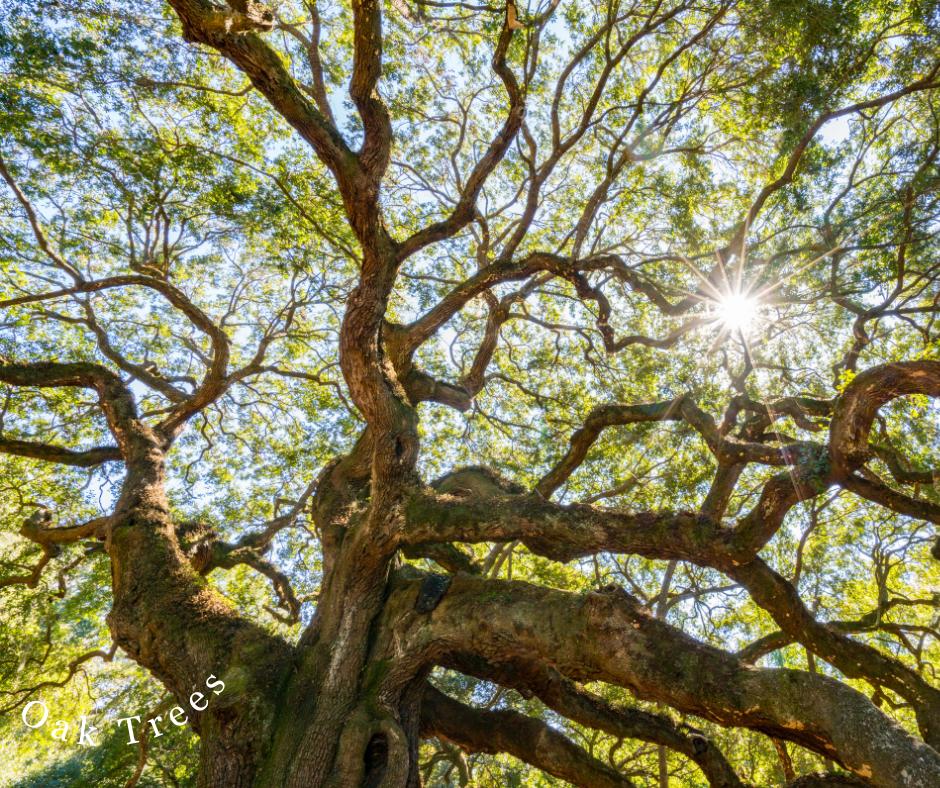
Oak trees at the Shakespeare Garden
Only the rose receives more attention from Shakespeare than the mighty oak. There are 34 explicit references to the oak, with four references to acorns. Shakespeare used the oak as a symbol of strength, but also describes them as “stout,” “sound,” “knotty,” “gnarled,” and “unwedgeable”. Symbols of solidity and fortitude are also mentioned, as are longevity and abundance. In The Tempest, the oak might become a place of imprisonment. He also uses the tree as a landmark in several plays.
Perhaps the most illustrative reference occurs in Macbeth. The three witches predicted correctly! The Birnam Oak branches of the trees in Birnam Wood camouflaged the army that was advancing against Macbeth.
Shakespeare was aware of the oak’s symbolic importance, but was almost certainly not aware of it ecologically. The oak is considered a keystone species by providing food and habitat for a huge diversity of organisms. There are over 450 species of oaks that are key to cleaning the air, sequestering CO2, and absorbing pollution. They grow in zones 3-8 or in higher altitudes. Oaks like fertile soil and full to dappled shade. It might take as much as 100 years for an oak to fully mature.
Only a few of the many quotes from Shakespeare’s works that reference oak:
-
Prospero:
To the dread rattling thunder
Have I given fire,
And rifted Jove’s stout oak
With his own bolt.
-
Mistress Page:
"They are all couched in a pit hard by
Herne’s Oak…"
Mistress Ford:
"The hour draws on. To the oak, to the oak!"
-
Oliver:
"Under an oak,
Whose boughs were mossed with age,
And high top bald with dry antiquity."



